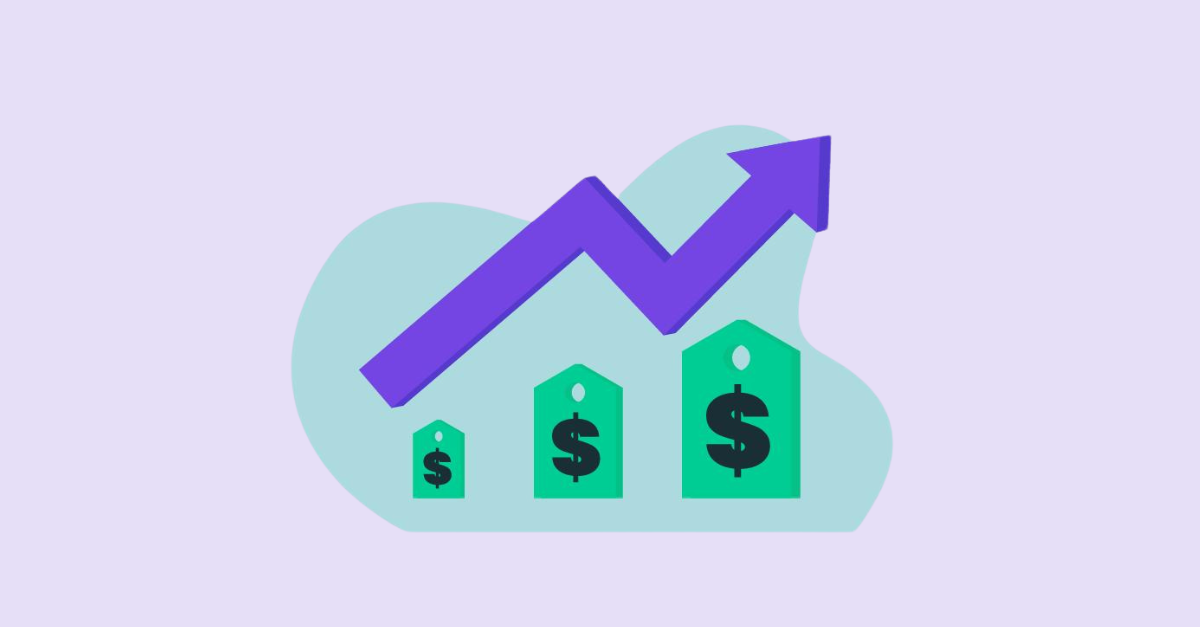6 principles of effective treasury management for uncertain times
Effective treasury management is crucial for startups. It’s a key component of overall financial stability and growth, especially in the early stages...
7 min read
 Evan Diaz de Arce
March 31, 2023
Evan Diaz de Arce
March 31, 2023
Have you ever lost sleep wondering what would happen to your business if a major change occurred? It could be a big competitor moving into your space. It could be new government regulations. There’s no shortage of potential changes that could rock your business overnight.
Even a sudden increase or decrease in demand for your product could leave you scrambling to respond. Would you be able to meet the challenge? Would you have the resources you’d need? What levers could you pull to keep your business viable and growing?
While you probably don’t lose sleep over them, there are just as many potential positives surrounding the future of your business. There are new opportunities and possibilities you may or may not recognize.
The best way to understand the impact of potential changes on your business is to use scenario analysis within a well-built financial model.
Traditional financial forecasting techniques typically rely on a single point of reference to understand future performance. This is an overly simplistic approach that often doesn’t reflect the full range of possible outcomes. This is one of the biggest advantages of financial modeling and scenario analysis.
When you have a detailed and accurate financial model, you can develop multiple scenarios for future events and examine how each would impact your financial performance. Because your model connects and correlates all of your financial data, the range of outcomes you create more accurately predicts your actual performance.
Scenario analysis provides you with a comprehensive view of future possibilities, so you can make data-driven decisions to steer your startup toward the best possible outcomes. This post provides a thorough overview of scenario analysis, and why every founder should be using it.
Key takeaways:

As we mentioned above, traditional financial forecasting methods often rely on a single data point to estimate future performance. Here’s an example to illustrate why this isn’t a good approach.
Let’s say a company forecasts that its sales will increase by 50% next year, based on this year’s historical data. While the resulting forecast may be reasonable, and possibly even accurate, it doesn’t take into account the simultaneous change in the cost of sales as the company scales staff and systems.
Scenario analysis with a financial model addresses this limitation by including all of those related changes within the same forecast. It’s also infinitely more powerful because it allows you to quickly create alternative scenarios where the growth rate is much lower or much higher.
With scenario analysis, founders can easily plan one strategy for their most probable (base-case) scenario and also create contingency plans for a best-case scenario and a worst-case scenario.
By considering these different scenarios, founders get a more comprehensive view of future possibilities, allowing them to prepare for a range of potential outcomes. This creates more resilient startups that can successfully respond to unexpected changes.
When you can model multiple scenarios, you can start to identify potential risks and opportunities that may not be exposed in a traditional forecast. You gain insight into how your position would likely be impacted by changes in market conditions, shifts in consumer behavior, new technological innovations, regulatory changes, geopolitical events, and more.
As an example, healthcare companies are subject to a range of regulations and policies from federal, state, and local agencies. If new changes are introduced that significantly impact costs in a specific city or state, the company can use scenario analysis to extrapolate the impact of that change if it were to be adopted nationally.
Likewise, if a major competitor starts focusing on a specific geographic area, the company can game plan to see the likely impact of decreasing market share and lower profits in that region, and then identify proactive measures to protect its position in markets that the competitor hasn’t entered yet.
Scenario analysis also allows founders to identify opportunities. By adjusting the assumptions in different scenarios, founders can perform sensitivity analysis to identify which changes will create the biggest impact on their future performance.
Many founders assume that a price increase would hurt revenue due to a decrease in conversion rates. However, this is often a bad assumption. Scenario analysis allows you to analyze your revenue to identify the break point in your conversion rate, below which this assumption is true.
When you know the break point, you can do an isolated test to see just how much of an impact a price increase actually has on your conversion. If you find that the decrease in conversion rates is not as bad as you expected, a price increase might actually create a significant boost in your revenue.

When you can project your actual accounting data into different forecasts based on different assumptions, you can use your existing data to make more informed decisions and begin to craft the best possible outcomes. Scenarios open up new insights into resource allocation, investment decisions, and risk management.
By evaluating your available courses of action, you can assess the risks and rewards associated with every decision you make - from major strategic pivots down to daily tactical decisions.
If you’re considering an investment in new equipment or emerging technology, you can use scenarios to evaluate the return on that investment in best-case and worst-case scenarios. This exercise often exposes whether or not the investment is a good decision, and also helps inform your decisions about how heavily you should lean in.
If you’re leaning toward a decision that carries significant risks, you can use scenario analysis to adjust different metrics and assumptions to identify your best options for mitigating those risks.
Scenarios are especially valuable when you’re making decisions about raising capital. You can create alternative scenarios to weigh the pros and cons of raising a round in the VC market, seeking debt-based financing, issuing a convertible note, or any other fundraising option. Scenarios will let you compare your likely rates of growth, cash runway, and equity dilution for each option.

Scenario analysis opens up a whole new world of collaboration among founders and other stakeholders in an organization. Difficult decisions begin to be made less by opinionated debate, and more by objective analysis.
When everyone on the team can illustrate their vision based on the same set of financial data, meetings that might otherwise have been filled with heated exchanges become productive working sessions driven by collaboration and consensus.
Stakeholders from different departments can share nuanced insights into the potential impacts of new strategies within a framework that everyone on the team understands.
Scenario analysis is empowering for employees at every level of the organization. Anyone can have a voice in the process by creating and sharing alternative scenarios that can ultimately influence the metrics and assumptions that are used in the company’s base-case forecast. Engaging stakeholders in the forecasting process keeps them invested and informed, and ensures that they have a chance to object to any assumptions or targets that are problematic in their view.
This collaboration reduces the likelihood of disagreements and misunderstandings that slow down the decision-making process. It also provides a forcing function for communication around key issues and areas of concern.
Finally, scenarios help founders communicate with investors, advisors, and other external stakeholders. Founders can use scenarios to get feedback on planned changes, communicate potential risks, and set realistic expectations about likely outcomes. Involving investors and advisors in the scenario modeling process can lead to valuable new ideas and perspectives that would otherwise be overlooked.

An example of scenario analysis in finance is projecting a company's future cash flow under different market conditions. For instance, a business might create three scenarios: a base case (steady growth), a best case (higher-than-expected sales), and a worst case (a market downturn). By analyzing these scenarios, the company can prepare strategies to manage risks and take advantage of opportunities, ensuring better financial decision-making.
The three scenarios of financial planning are typically:
To perform a scenario analysis, start by identifying key variables that could impact your business, such as sales growth, costs, or changes in market conditions. Next, create multiple scenarios by adjusting these variables to reflect different possible outcomes, typically including a base case (most likely scenario), a best case (optimistic scenario), and a worst case (pessimistic scenario). Then, analyze the impact of each scenario on your financial performance, focusing on metrics like cash flow and profitability to understand the potential outcomes. Finally, use these insights to make informed decisions, helping you to plan effective strategies, mitigate risks, and seize opportunities for growth.
Scenario analysis is a powerful tool for financial forecasting that allows you to prepare for a range of potential outcomes, make data-driven decisions, and build a stronger organization.
Unfortunately, if your financial model lives in a spreadsheet, you’ll be somewhat limited in this regard. Modeling scenarios within a spreadsheet often requires you to create a new model for every scenario. This results in many different files and sheets that are hard to keep track of, hard to compare against each other, and quickly get stale as time passes. If this is your only option, we have two recommendations you should always follow.
First, adopt a standardized naming convention for your different scenarios and use it consistently. It can be very frustrating to put hours of work into a scenario that you have trouble finding when you need it. Second, protect your base case model at all costs. You should have one common starting point for all of your scenarios. Lock your base case down and always start new scenarios in a copy.
To harness the full potential of scenario analysis, your best option is to use an online financial modeling software like Forecastr. You can create an unlimited number of scenarios within your account, and you can control which users get access to which features for each scenario. You can quickly integrate your accounting data, so your historical data updates automatically. And you get access to our team of professional analysts to help you troubleshoot issues and make the most of your model.
Get notified about new events, free resources, and fresh content

Effective treasury management is crucial for startups. It’s a key component of overall financial stability and growth, especially in the early stages...

Running a startup or a small business can feel like sailing through uncharted waters when you’re managing finances. As a founder, keeping your ship...

Inflation. It’s a big deal in the world of finance, and it affects all types of businesses, from huge enterprises to budding startups. If you’re on...